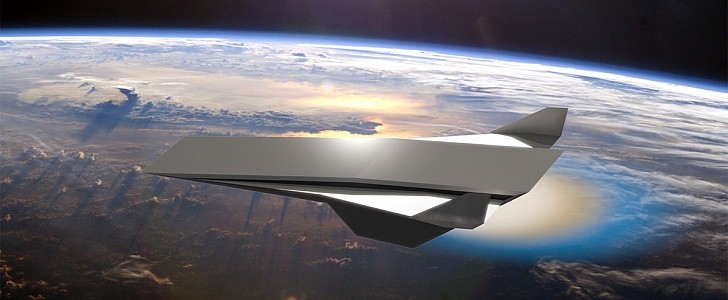There are many interesting waves gearing up to transform the future of aeronautics, and one of them is hypersonic travel. It’s particularly interesting for the U.S. Air Force, which has been actively supporting several projects in this field, from hypersonic rockets to cargo aircraft that can transport essential supplies at very high speeds, anywhere in the world. But there’s still a great deal to learn about this way of travelling, as this new research study shows.
Here’s a fun fact – a single raindrop can create a load equal to the weight of an elephant, if it’s hit at Mach 8. Now, imagine multiple of these “elephants” weighing down a hypersonic vehicle. As Michael Kinzel, assistant professor at the University of Central Florida Department of Mechanical and Aerospace Engineering explains, this is what happens when a vehicle flying at such high speeds goes through apparently harmless rain.
Kinzel is a co-investigator in a new $1 million project that’s funded by the Air Force Office of Scientific Research and led by Boston University. Kinzel and Subith Vasu, a professor at the same UFC department, will work together with the Boston University team. It might seem mind-blowing that this amount of money and three years will be dedicated to studying the impact of raindrops on hypersonic aircraft and rockets. But it turns out that these little guys could be as harmful as conventional enemies.
Because of the hypersonic speeds (Mach 5 and higher), colliding with raindrops can actually cause serious damage to the aircraft. The project team will study how raindrops are affected when passing through what is called “a hypersonic shock wave,” and in turn, this data will be used to improve the design of hypersonic vehicles and to predict when they should fly.
Basically, the researchers want to determine the safest ways that hypersonic travel can be conducted through rain, as well as the best way to design these vehicles, for structural integrity. This will improve the accuracy of hypersonic rockets launched through rain or heavy storms, according to Kinzel, but the applications will be much wider, including space exploration.
This research is of utmost importance, since USAF is involved in several hypersonic projects. Recently, it started testing hypersonic flights for cargo delivery, using the massive Roc carrier aircraft that can deploy multiple hypersonic Talon-A vehicles at once.
Kinzel is a co-investigator in a new $1 million project that’s funded by the Air Force Office of Scientific Research and led by Boston University. Kinzel and Subith Vasu, a professor at the same UFC department, will work together with the Boston University team. It might seem mind-blowing that this amount of money and three years will be dedicated to studying the impact of raindrops on hypersonic aircraft and rockets. But it turns out that these little guys could be as harmful as conventional enemies.
Because of the hypersonic speeds (Mach 5 and higher), colliding with raindrops can actually cause serious damage to the aircraft. The project team will study how raindrops are affected when passing through what is called “a hypersonic shock wave,” and in turn, this data will be used to improve the design of hypersonic vehicles and to predict when they should fly.
Basically, the researchers want to determine the safest ways that hypersonic travel can be conducted through rain, as well as the best way to design these vehicles, for structural integrity. This will improve the accuracy of hypersonic rockets launched through rain or heavy storms, according to Kinzel, but the applications will be much wider, including space exploration.
This research is of utmost importance, since USAF is involved in several hypersonic projects. Recently, it started testing hypersonic flights for cargo delivery, using the massive Roc carrier aircraft that can deploy multiple hypersonic Talon-A vehicles at once.






